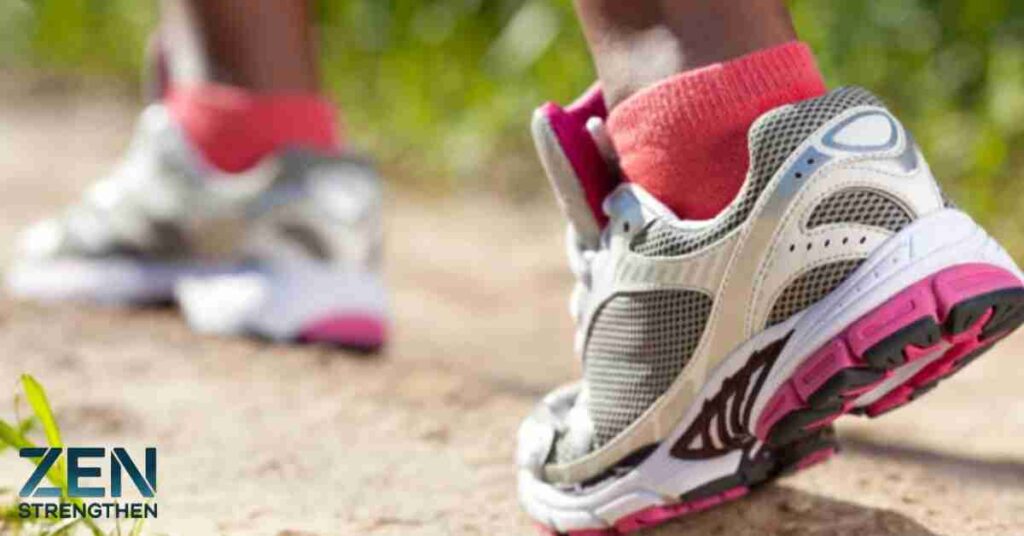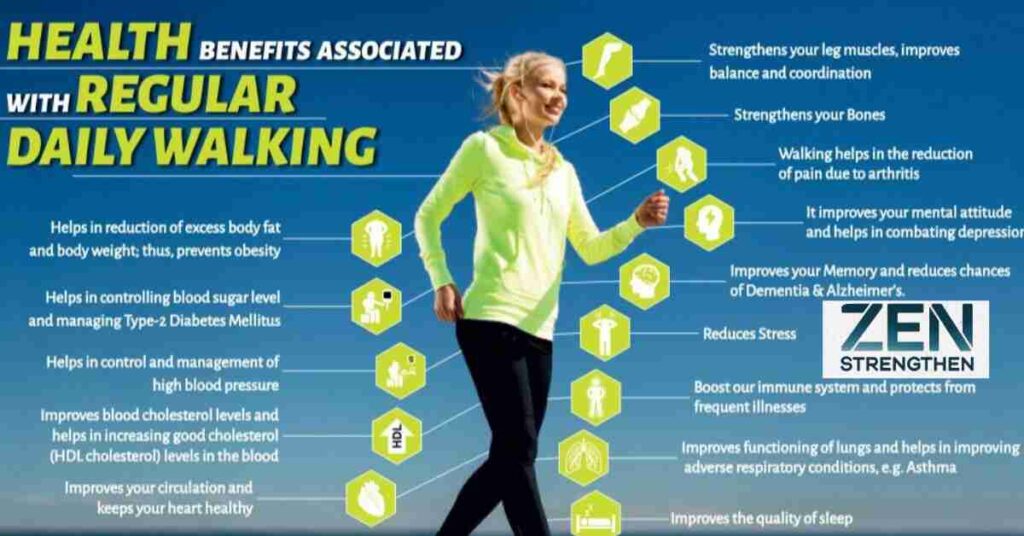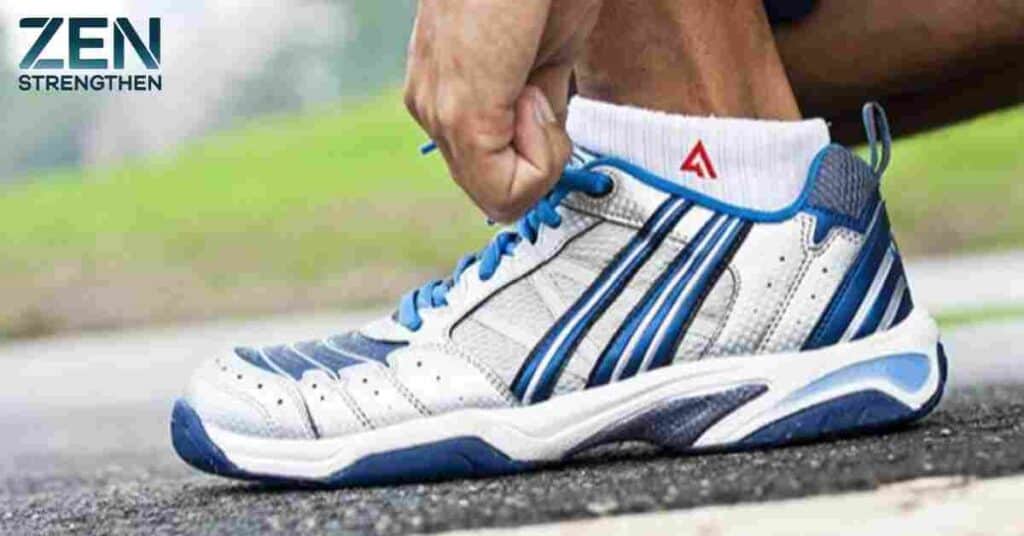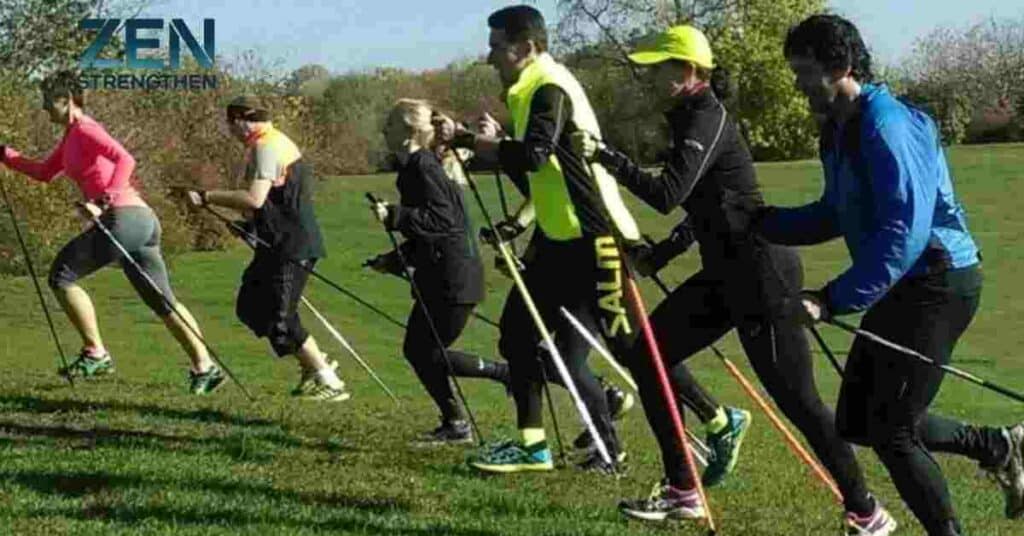In today’s fitness-conscious world, the concept of tracking steps has gained immense popularity. Among the various step goals, achieving how many miles is 18000 steps daily stands out as a significant milestone. But what does this number truly represent in terms of distance, health benefits, and overall fitness impact?
This comprehensive guide delves deep into the science, practical applications, and life-changing potential of consistently reaching this impressive step count.
Decoding the Step-to-Distance Equation: More Than Just a Number

The Science of Stride: Understanding Your Personal Metrics
When it comes to translating steps into miles, one size certainly doesn’t fit all. Your individual characteristics play a crucial role in determining the actual distance covered by your steps. Let’s break down the key factors that influence this calculation:
- Height and Leg Length: Taller individuals generally have longer strides, covering more ground with each step.
- Walking or Running Speed: Faster paces often result in longer strides, increasing overall distance.
- Terrain Variations: Uphill, downhill, or uneven surfaces can significantly alter your stride length.
- Age and Flexibility: As we age, our stride length may naturally decrease, affecting distance calculations.
- Current Fitness Level: More conditioned individuals often maintain longer strides over time.
- Natural Gait Pattern: Everyone has a unique walking style that influences their step-to-distance ratio.
Comprehensive Conversion Guide: From Steps to Miles and Beyond
To provide a more accurate picture of what 18,000 steps means for different individuals, let’s examine this detailed conversion table:
| Height Range | Avg. Stride Length | Miles for 18,000 Steps | Kilometers | Est. Daily Caloric Burn |
| Under 5’0″ | 1.9 feet | 6.5 miles | 10.4 km | 650-800 calories |
| 5’0″ – 5’3″ | 2.1 feet | 7.2 miles | 11.6 km | 700-850 calories |
| 5’4″ – 5’7″ | 2.3 feet | 7.8 miles | 12.6 km | 750-900 calories |
| 5’8″ – 5’11” | 2.5 feet | 8.5 miles | 13.7 km | 800-950 calories |
| 6’0″ – 6’2″ | 2.7 feet | 9.2 miles | 14.8 km | 850-1000 calories |
| Over 6’2″ | 2.9 feet | 9.9 miles | 15.9 km | 900-1050 calories |
This table serves as a starting point, but remember that individual variations can significantly impact these estimates.
Time Investment Analysis: Walking vs. Running to 18000 Steps to miles
The Walking Odyssey: A Breakdown by Pace
Achieving 18000 steps through walking requires a significant time investment, varying based on your chosen intensity and fitness level in miles. Let’s explore the time requirements for different walking paces:
| Pace Description | Speed (mph) | Time to Complete | Effort Level | Best For |
| Leisurely Walk | 2.0-2.5 | 4.0-4.5 hours | Light | Beginners, Recovery |
| Casual Pace | 2.6-3.0 | 3.5-4.0 hours | Light-Moderate | General Fitness |
| Brisk Walk | 3.1-3.5 | 3.0-3.5 hours | Moderate | Fat Burning |
| Power Walking | 3.6-4.0 | 2.5-3.0 hours | Moderate-High | Cardio Training |
| Race Walking | 4.1-4.5 | 2.0-2.5 hours | High | Athletic Training |
Running the Distance: A Quicker Path to 18000
For those looking to achieve their step goal more quickly, running presents an efficient alternative. Here’s a breakdown of running times and their associated benefits:
| Running Style | Speed (mph) | Time to Complete | Calories Burned (150lb person) |
| Light Jog | 5.0-5.5 | 90-100 minutes | 800-900 calories |
| Steady Run | 5.6-6.5 | 75-85 minutes | 900-1000 calories |
| Tempo Run | 6.6-7.5 | 65-75 minutes | 1000-1100 calories |
| Fast Run | 7.6-8.5 | 55-65 minutes | 1100-1200 calories |
| Speed Run | 8.6-9.5 | 45-55 minutes | 1200-1300 calories |
The Health Revolution: Comprehensive Benefits of High Step Counts

Caloric Expenditure: Fueling Your Fitness Fire
The number of calories burned during your 18000 steps to miles journey depends on various factors, including your weight, walking or running speed, and individual metabolism. Here’s a detailed breakdown:
| Weight (lbs) | Walking Calories (2.5 mph) | Walking Calories (3.5 mph) | Running Calories (5.5 mph) | Running Calories (7.5 mph) |
| 120 | 650-750 | 750-850 | 950-1050 | 1150-1250 |
| 140 | 750-850 | 850-950 | 1050-1150 | 1250-1350 |
| 160 | 850-950 | 950-1050 | 1150-1250 | 1350-1450 |
| 180 | 950-1050 | 1050-1150 | 1250-1350 | 1450-1550 |
| 200 | 1050-1150 | 1150-1250 | 1350-1450 | 1550-1650 |
| 220 | 1150-1250 | 1250-1350 | 1450-1550 | 1650-1750 |
Beyond Calorie Burning: A Holistic Health Transformation
The benefits of consistently achieving 18000 steps extend far beyond mere calorie expenditure in miles. Research has shown that maintaining high daily step counts can lead to significant improvements in overall health and well-being:
- Enhanced Cardiovascular Health: Regular walking or running strengthens the heart, improves circulation, and lowers the risk of heart disease.
- Improved Insulin Sensitivity: High step counts can help regulate blood sugar levels, reducing the risk of type 2 diabetes.
- Reduced Risk of Chronic Diseases: Consistent physical activity has been linked to lower rates of various chronic conditions, including certain cancers and osteoporosis.
- Better Mental Health Outcomes: Exercise releases endorphins, reducing stress, anxiety, and symptoms of depression.
- Increased Bone Density: Weight-bearing exercises like walking help maintain and improve bone strength, particularly important as we age.
- Enhanced Cognitive Function: Regular physical activity has been shown to improve memory, focus, and overall brain health.
- Improved Sleep Quality: Achieving high step counts, especially when done outdoors, can help regulate your circadian rhythm and improve sleep patterns.
- Boosted Immune System: Moderate, regular exercise has been linked to a stronger immune response and increased resistance to infections.
- Enhanced Digestive Health: Walking aids in promoting healthy digestion and can help alleviate constipation.
- Increased Longevity: Studies have shown that individuals who maintain high levels of physical activity tend to live longer, healthier lives.
Optimizing Performance: Strategies for Step Success
Activity Level Classification: Where Do You Stand?
Understanding your current activity level is crucial for setting realistic goals and measuring progress. Here’s a simplified breakdown of activity levels based on daily step counts:
| Activity Level | Daily Steps | Fitness Category | Recommended For |
| Sedentary | < 5,000 | Basic | Health Maintenance |
| Low Active | 5,000-7,499 | Beginner | Weight Management |
| Somewhat Active | 7,500-9,999 | Intermediate | Fitness Building |
| Active | 10,000-12,499 | Advanced | Athletic Performance |
| Highly Active | 12,500+ | Elite | Peak Performance |
The Science of Moderate-intensity Aerobic Activity
To maximize the benefits of your 18,000-step journey, it’s essential to understand and monitor your effort level. Here’s a guide to different intensity levels and their associated benefits:
| Intensity Level | Heart Rate Zone | Benefits |
| Light | 50-60% MHR | Fat burning, recovery |
| Moderate | 60-70% MHR | Endurance, overall health |
| Vigorous | 70-80% MHR | Performance, stamina building |
Crafting Your Step Strategy: A Blueprint for Success

Progressive Planning: The Path to 18,000 Steps
Achieving and maintaining a daily count of 18,000 steps requires careful planning and consistent execution. Remember, it’s not about overnight transformation but sustainable progression. Here’s an evidence-based approach to building your step count over time:
Focus on Baseline Building
- Determine your current average daily step count
- Gradually increase your daily steps by 500-1000 each week
- Incorporate short walks throughout your day
Introduce Intensity Variations
- Begin alternating between casual walks and brisk walks
- Experiment with different terrains (e.g., hills, stairs)
- Try interval walking: 5 minutes at a moderate pace, followed by 1 minute of brisk walking
Distance Challenges
- Introduce one longer walk (45-60 minutes) per week
- Continue increasing daily step count by 500-1000 steps
- Consider joining a walking group or finding a walking buddy for motivation
Week 7-8: Reach Target Step Count
- Aim to consistently hit 18,000 steps daily
- Mix various walking intensities throughout the week
- Celebrate your progress and reassess your goals
Maximizing Your Walking Benefits: Timing is Everything
The timing of your “walks can significantly” impact their effectiveness and how easily they fit into your lifestyle. Let’s explore the benefits of morning and evening walking sessions:
Morning Session Benefits:
- Enhanced metabolism activation
- Improved energy levels throughout the day
- Better mental clarity and focus
- Consistent habit formation
- Exposure to natural light helps regulate circadian rhythms
Evening Session Advantages:
- Effective stress reduction after a long day
- Improved sleep quality
- Natural transition from work to rest
- Opportunities for social walking with family or friends
- Cooler temperatures in warmer climates
Advanced Training Elements: Elevating Your Step Game

Interval Training: Boosting Results Through Intensity Changes
Incorporating interval training into your walking routine can significantly enhance your cardiovascular fitness and calorie burn. Try this simple interval workout:
- Warm-up: 5 minutes at a comfortable pace
- Interval Set (repeat 5-8 times):
- 5 minutes at a moderate pace
- 1 minute of brisk walking
- 30 seconds of power walking or light jogging
- Cool-down: 5 minutes at a comfortable pace
Terrain Variation: Challenging Your Body in New Ways
Different walking surfaces offer unique benefits and challenges:
- Grass: Provides natural cushioning, reducing impact on joints
- Sand: Increases calorie burn and strengthens stabilizing muscles
- Hills: Enhances cardiovascular fitness and builds lower body strength
- Track: Offers a consistent surface for pace training and interval work
- Urban Environments: Improves agility and spatial awareness
Nutrition and Hydration: Fueling Your 18000 Steps in miles Journey
Strategic Fueling: Eating for Optimal Performance
Proper nutrition is crucial for supporting your high-step lifestyle. Here’s a guide to fueling your walks:
Pre-walk:
- Consume a light, carbohydrate-based snack 30-60 minutes before your walk
- Examples: banana with peanut butter, whole grain toast with honey, or a small fruit smoothie
During (for longer walks):
- Focus on hydration and electrolyte replacement
- Consider energy gels or easily digestible snacks for walks lasting over 90 minutes
Post-walk:
- Consume a combination of protein and carbohydrates within 30 minutes of finishing
- Examples: Greek yogurt with berries, a turkey sandwich on whole grain bread, or a protein shake with fruit
Hydration Guidelines: Quenching Your Thirst for Health
Proper hydration is essential for maintaining performance and preventing fatigue during your walks. Use this hydration guide:
| Activity Duration | Water Needs | Electrolyte Needs |
| 1-2 hours | 16-24 oz | Minimal |
| 2-3 hours | 24-36 oz | Moderate |
| 3+ hours | 36+ oz | Essential |
Remember to adjust your fluid intake based on temperature, humidity, and individual sweat rates.
Leveraging Technology: Tools for Tracking and Motivation
Modern Step Tracking Tools: Your Digital Walking Companions
Today’s technology offers various ways to monitor your progress towards 18,000 steps:
- Smartphone Apps: Many phones have built-in step tracking capabilities, with additional apps offering more features.
- Dedicated Pedometers: Simple, reliable devices focused solely on step counting.
- Smartwatches: Offer comprehensive fitness tracking, including steps, heart rate, and GPS.
- Fitness Bands: Lightweight options for all-day wear and basic activity tracking.
Key Features to Consider: Maximizing Your Tracking Potential
When choosing a step tracking device or app, focus on these essential elements:
- Step Accuracy: Ensure the device provides reliable step counts.
- Heart Rate Monitoring: Useful for gauging exercise intensity and overall fitness.
- GPS Mapping: Helps track outdoor walks and runs, providing distance and route information.
- Progress Analytics: Look for tools that offer insights into your trends and improvements over time.
- Social Features: Some apps allow you to connect with friends or join challenges for added motivation.
Overcoming Obstacles: Solutions for Common Challenges

Weather Adaptations: Don’t Let Mother Nature Derail Your Progress
Inclement weather doesn’t have to interrupt your step streak. Consider these alternatives:
- Indoor walking tracks at local community centers or schools
- Shopping malls during off-peak hours
- Home treadmills or stationary bikes (converting time to equivalent steps)
- Stair climbing in your home or apartment building
- Indoor swimming (converting laps to step equivalents)
Time Management Strategies: Finding Steps in a Busy Schedule
Fitting 18000 steps in miles into a packed day requires creativity and commitment. Try these time-efficient strategies:
- Walking Meetings: Suggest walk-and-talk sessions for one-on-one meetings.
- Active Commuting: Walk part or all of your commute, or get off public transport a few stops early.
- Lunch Break Walks: Use part of your lunch hour for a brisk walk.
- Evening Family Time: Make after-dinner walks a family tradition.
- Commercial Break Laps: Walk around your home during TV commercial breaks.
- Phone Call Pacing: Move around while taking phone calls.
Conclusion
Your commitment to achieving 18,000 steps daily demonstrates a serious dedication to your healthy lifestyle. While challenging, the comprehensive benefits to physical and mental health make it a worthy goal for those ready to embrace an active lifestyle.
By following these guidelines and maintaining consistency, you’re not just counting steps – you’re transforming your life, one step at a time.
Would you like me to explain any particular aspect in more detail?
FAQ,s
How does walking 18000 steps compare to other exercises?
It’s equivalent to about 90 minutes of moderate swimming or 60 minutes of cycling, making it a substantial form of exercise in miles.
What’s the best way to prevent injuries at high step counts?
Focus on proper footwear, gradual progression, and regular rest days. Listen to your body and adjust accordingly.
Can I achieve similar benefits with fewer, more intense steps?
While intensity can increase benefits, the cumulative effect of 18,000 steps provides unique advantages for sustained health improvement.
Is it necessary to do all steps at once?
No, breaking your steps into multiple sessions can be equally effective and often more manageable for busy schedules.
Long-term Success Strategies
Creating Sustainable Habits
Build these foundational elements:
- Realistic goal setting
- Progress tracking
- Support system
- Reward mechanisms
Measuring Progress
Track these key indicators:
- Resting heart rate
- Energy levels
- Sleep quality
- Recovery time
The Road Ahead
Remember, achieving 18,000 steps consistently is a journey, not a destination. Focus on:
- Progressive improvement
- Sustainable habits
- Balanced approach
- Long-term health benefits
“The difference between trying and triumph is a little umph!” – Marvin Phillips
This journey to 18,000 steps represents more than just movement – it’s an investment in your long-term health and vitality. Whether you’re just starting or looking to optimize your current routine, remember that every step counts toward your goals.
Disclaimer
“This article” is intended for general informational purposes only and does not address individual circumstances. It is not a substitute for professional advice or help and should not be relied on to make decisions of any kind. Any action you take upon the information presented in this article is strictly at your own risk and responsibility!

Jhon Wick is a seasoned writer in the fitness niche, dedicated to sharing expert advice and the latest trends. With a passion for health and wellness, Jhon offers practical tips and inspiration to help readers achieve their fitness goals and stay motivated.







